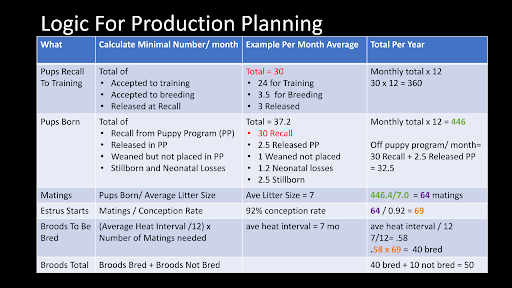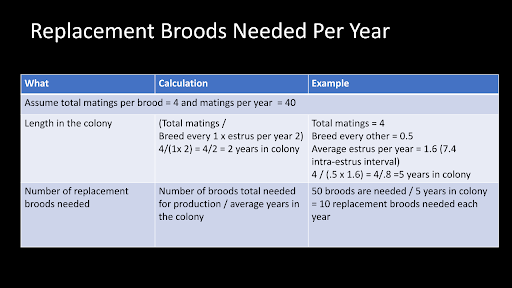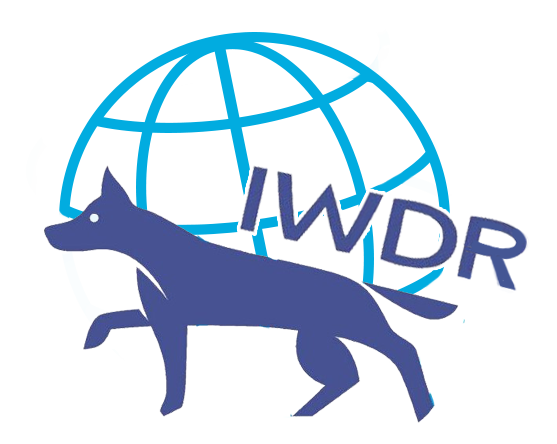-
Behaviour Scoring
-
- 1. Anxious in unfamiliar situations
- 2. Fear Of Noises
- 3. Fear of Novel Objects
- 4. Fear of Underfootings
- 5. Fear of Dogs
- 6. Fear of Stairs
- 7. Fear of Traffic
- 8. Separation Anxiety
- 9. Hyper-Attachment
- 10. Fear Of Strangers
- 11. Body Handling Concern
- 12. Retreats When Reached For
- 13. Harness Handle On Back Sensitivity
- 14. Avoidance Of Blowing Fan
- 15. Body Sensitivity To Object Contact
- 16. Anxious About Riding In Vehicles
- 17. Inhibited or passively avoidant when exposed to potentially stressful situations
- 18. Activated when exposed to potentially stressful situations
- 19. Excitable
- 20. Slow To Return To Productive Emotional State
- 21. Fidgety When Handler Is Idle
- 22. Fear On Elevated Areas, Drop-Offs Etc.
- 23. Barks Persistently
- 24. High Energy Level
- 25. Lacks Focus
- 26. Movement Excites
- 27. Chasing Animals
- 28. Dog Distraction
- 29. Sniffing
- 30. Scavenges
- 31. Inappropriate Behavior Around The Home
- 32. Lacks Initiative
- 33. Not Willing
- 34. Resource Guarding Toward People
- 35. Aggression Toward Strangers
- 36. Aggression Toward Dogs
- 37. Resource Guarding Toward Dogs Or Other Pets
- 38. Inappropriate Elimination While Working En Route
- 39. Socially Inappropriate Behavior With People
- 40. Inconsistent
- 41. Handler/Dog Team
- 42. Relationship Skills
- 43. Comparison 9 To 1 Score
- 44. Socially Inappropriate Behavior With Dogs
- 45. Thunder Reaction Prior To, During Or Immediately After A Thunderstorm
- 46. Kennels Poorly
- 47. Working Speed
- 48. Gait When Moving Out
- 49. Housebreaking Problems
- 50. Innate Desire To Work
- 51. Avoidance Of Exhaust From Vehicles
- Show all articles ( 36 ) Collapse Articles
-
-
-
Practice Videos
-
Behavior Testing
-
Database User Manual
-
-
-
- Adding a New Dog (using Manage Your Dog’s Data, MyDogs)
- Alerts
- BCL, Behavior Checklist
- Elbow Quick, Add new
- Estrus & Whelps
- Eye Quick
- Genetic Test Panel
- Genetic Test Quick
- Health Diagnoses Add/Edit
- Health History Report
- Health Normals, Add new
- Heart Quick
- Hip BVA, Add new
- Hip FCI, Add new
- Hip OFA, Add new
- Hip Penn Hip, Add new
- Photos PDFs etc.
- Private Notes
- Procedures, Add new
- Reminders
- Share my dog data to another organization
- Skin Quick
- Status History
- Weight - Entering a dog's weight
- ADI Public Access Test
- Hip Vezzoni, Add new
- Status Detail
- Edit or Change Call Name / Pedigree Name / Owner ID
- Add New Microchip / Delete Incorrect Microchip
- End Reasons
- Juvenile Estrus
- Communications Activities
- Incidents
- Show all articles ( 18 ) Collapse Articles
-
- Articles coming soon
-
-
-
-
- Alternate Therapy/Rehab
- Diagnostic Imaging, Add new / Edit or Delete
- Diet
- Elbow Quick, Add new / Edit or Delete
- Estrus & Whelps, Add new
- Eye Quick, Add new / Edit or Delete
- Genetic Test Quick, Add new / Edit or Delete
- Health Diagnoses, Add new / Edit (Update) or Delete
- Health History Report, Generate a PDF
- Health Normals
- Health Screening List
- Hip OFA Add new / Edit or Delete
- Hip Penn Hip Add new / Edit or Delete
- Hospitalization, Add new
- Kennel Tasks, Add new / Edit or Delete
- Lab, Add new / Edit or Delete
- Photos, PDFs, etc., Add new
- Reminders Add new / Edit or Delete
- Rx, Add new / Edit or Delete
- Semen Cryo, Add new / Edit or Delete
- Skin Quick Add new / Edit or Delete
- SOAP, Add new / Edit or Delete
- Status History
- Supplies Used, Add new / Edit or Delete
- Surgery, Add new
- Treatments Add new / Edit or Delete
- Vaccines Add new / Edit or Delete
- Weight and BCS Body Condition Score - Add new / Edit or Delete
- Hip Vezzoni, Add new
- Show all articles ( 14 ) Collapse Articles
-
-
-
-
Early Socialization
-
- Video - Coat Desensitization
- Video - Novel Objects
- Video - Trolley Ride with Mom
- Early Puppy Socialization - Novel Objects video
- Early Puppy Socialization – Novel Sounds video
- Early Puppy Socialization – Introducing New Environments video
- Early Puppy Socialization – Motor Development, Balance, Coordination, Proprioception video
- Early Puppy Socialization – Passive Environmental Enrichment in the Den video
- Early Puppy Socialization – Stairs
-
-
Genetic Selection & Inbreeding
-
- What are EBVs and how do they help?
- How EBVs are calculated
- What is needed to calculate EBVs and EBV accuracy?
- Using EBVs effectively
- Selection index
- Why are EBVs different for littermates?
- Presentation Recording: Improving behavior using EBVs
- Presentation Recording: Using EBVs successfully
- Presentation Recording - Improving health using EBVs
-
Webinars
-
Reproduction
-
Organization Management
Production
Production Planning
Production planning at its core is producing the right number of dogs, when they are needed, with the traits required (breed, sex, size, personality, health) to meet the needs of the training department, clients, and replacement breeders. Simple in theory, but theory doesn’t always fit easily into real life situations. The reality is over or under production can be costly and lead to loss of resources: financially, emotional fatigue of staff/volunteers, loss of skilled staff/volunteers, and lead to strains on infrastructure like kennel space. Also, there are outside factors that can upend a carefully crafted production plan when not considered. The three major external influences to consider that can upset a production plan are fertility, capacity, and other factors within the organization.
Fertility
Fertility encompasses everything from heat cycle intervals, estrus start dates, ovulation, conception rates, semen management, and stillborn and neonatal losses. Heat cycle intervals, estrus start dates, and ovulation are factors that you have little to no control over. However, proper record keeping, hormonal testing, and breeding timing can help make informed decisions and plans. Additionally, working with local reproduction vets can help improve fertility issues.
IWDR has several such tools easily accessible to users of the database:
Conception rates can often limit production planning by affecting timing of litters born, number of puppies born, and even affecting the breed of dogs available. Using industry best practices can help increase conception rates. Hormonal testing, vaginal cytology, pre-breeding exams, and semen evaluations are but a few factors that can help mitigate poor conception rates. Another factor is timing and breeding methods. Using the data collected from the hormonal tests, vaginal cytology, and semen evaluations, you can breed on the right dates to increase conception chances. Using the right method, natural or artificial insemination via catheter, MAVIC catheter, or transcervical insemination can also increase conception rates. IWDR’s Knowledge Base Resource Center has several articles relating to this topic:
- Types of mating
- Maximising litter size
- Semen management. Maintaining high quality semen in your colony begins with selecting only males with quality semen. Care of the male, testing for brucellosis prior to breeding as well as nutrition and other environmental stressors such as exposure to excessive heat all play a role. Semen should be routinely evaluated before the planned mating.
Stillborn and neonatal losses are a frustrating part of breeding. Average loss is considered between 5% to 10% so this should be accounted for in colony planning. (Chastant-Maillard S, Guillemot C, Feugier A, Mariani C, Grellet A, Mila H. Reproductive performance and pre-weaning mortality: Preliminary analysis of 27,221 purebred female dogs and 204,537 puppies in France. Reprod Domest Anim. 2017 Apr;52 Suppl 2:158-162. doi: 10.1111/rda.12845. Epub 2016 Nov 7. PMID: 28402063; Indrebø, A., Trangerud, C. & Moe, L. Canine neonatal mortality in four large breeds. Acta Vet Scand 49 (Suppl 1), S2 (2007). https://doi.org/10.1186/1751-0147-49-S1-S2). Stillborn and neonatal losses can be mitigated by managing the brood’s health at every stage: pre-breeding, gestation, and lactation. Also, rates can improve by following biosecurity recommendations to keep outside viruses, parasites, bacteria, and other factors from harming the litter.
- Adding stillborn and neonatal losses: There is no charge to add these puppies and the data are critical to know for colony health and production planning.
Capacity
Capacity doesn’t just refer to spaces like whelping areas and kennel space for breeders, puppies, and dogs in training, but also to people needed to make the organization run. Skilled and experienced staff and volunteers are needed to help whelp, socialize, raise, and train the dogs needed. Creating a production plan and communicating the number of puppies targeted with the relevant staff (e.g. Puppy program manager, Kennels manager etc) will allow for advance planning. For example, a puppy raising department knowing at the beginning of the year that 150 puppies is the target will allow them to know how many raisers they need to recruit, train, and prepare. They can also look at the dogs being recalled for training during that year to talk to specific raisers about re-raising. The breeding department meanwhile can look at upcoming heat cycles and plan breedings around whelping bay capacities and even major holidays when there is typically a strain on volunteer/staff resources.
If an increase in output of graduated dogs is expected, the breeding colony also needs to be increased by the number of broods about 2-3 years prior to starting training. Increased studs are also needed to maintain genetic diversity. Projecting dog supply for the upcoming 3 to 5 years, ensuring that the organization has proper physical space to support the number of dogs needed, and has ample staff and volunteers to support the organization needs is key to production planning.
Other Factors within the Organization
Other factors that affect production planning success can be mitigated by clear communication, defined processes, and strategic planning. Early socialization, puppy raiser skills, vet criteria, trainer skills and experiences, and client’s needs all factor into successful placement and influence production needs.
Early socialization is critical in developing a dog’s confidence and ability to adapt to new and novel stimuli and situations. Creating a program that gives the puppies safe and positive experiences is essential for long term success and stability.
Puppy raiser skills and experience should be considered when placing puppies into their homes. Identifying the top 5 behavioral reasons for dog failure in your program and knowing which are more strongly influenced by the environment provides focus for increased attention to puppy matching, training, and support of puppy raisers. Accurate End Reasons stored in IWDR are used to create a summary graph of failure reasons.
A puppy raising program that emphasizes support, continuing education, and creates an environment for clear and open communication helps set the raisers and puppies up for success.
Having concise protocols and processes for veterinary care allows for clear communication and standards for success. This can be achieved by setting up scheduled exams, assessments, talking to veterinarian partners about communicating clear diagnoses (i.e. ear debris vs ear flush vs otitis), and gathering basic health clearances. Understanding your colony’s health can create a sustainable production plan.
Trainer skills and expectations influence successful placements. Creating a common language around temperament and training is key to making sure trainers, breeding staff, and puppy raising staff are communicating in productive ways. The Behavior Checklist or BCL helps standardize terminology across all users and leads to clearer understanding of organizational needs.
Keeping track of the needs of clients served, potential clients, and repeat clients will help steer production needs. It is important to take into consideration the kind of breed and personality that makes up the majority of placed dogs. It takes most dogs around 2 years from birth to client placement so knowing the demographic of clients currently utilizing your organization and clients who could be or will come back will help make breeding decisions based on breed and temperament.
Making the External Influences Work for You
When it comes to production planning and considering the above factors, communication is key. Communicate regularly with colleagues who influence breeding, puppy raising, veterinary, training, client services, and strategic planning. Knowing what the organization as a whole needs to make a successful match will help in making long term decisions. Additionally, utilizing industry best practices to help alleviate issues that arise from fertility and capacity issues, training, staffing, and limited resources. Finally, follow the basic rule that the number of puppies entering the program must equal the number of young dogs needed to be recalled to training every 12 to 15 months. Include losses due to health, temperament, and accidents in those calculations.
Production Plot Workbook & Logic for Production Planning


The production plot workbook is a great tool to help strategically plan for the future. This feature is available to IWDR / IWDA members only. Please log in and click the link below to see more and download the excel workbook; or review these options to support us and access these materials:
- Members, click here for the Production Plot Workbook
- Non-members, gain access to these materials and more: Enrol in the International Working Dog Registry
- Or alternatively become an international Working Dog Association member to gain the same access.
Effective Population Size
Effective population size (Ne) is a key parameter in population genetics. It is the number of individuals that effectively participates in producing the next generation. It also quantifies the magnitude of genetic drift and inbreeding within a breeding colony. The overall goal is to have Ne be as high as possible.
- Members can click here for our Effective Population size calculator.
- Non-members, gain access to these materials and more: Enrol in the International Working Dog Registry
- Or alternatively become an international Working Dog Association member to gain the same access.
There are some key takeaways when using the principles of population genetics for making genetic change. First, keep a variety of families for breeding, basically begin with least related dogs in the beginning. Then, use selection among offspring of the less related parents to identify those young dogs that are most likely to perpetuate the qualities you desire and keep those young dogs for breeding. Remember to keep a broad cross-section of young dogs across families, so genetic diversity can be maintained.
Second is to have short generation intervals, which will increase the rate of genetic change obtained per year. Use young dogs of the next generation as soon as possible to maintain reproductive capacity and to hasten genetic improvement per year.
By applying these two key points and doing so by keeping Ne above 20, it is possible for a breed to realize only a slow increase in inbreeding per generation while also practicing selection. Try very hard to avoid matings that produce a rapid increase in inbreeding, which also causes a rapid loss of genetic diversity. Slowly increasing inbreeding over many generations of selection for a set of common goals, will concentrate the “genes” desired to perpetuate in puppies produced as the next generation. It will also ensure the long-term survival of the breed.
When looking at replacement breeders within a family, utilize estimated breeding values (EBVs) to help determine those young offspring that are most likely to perpetuate the goals established for a breed, then optimize matings by identifying mates that complement each other genetically while also producing puppies that are the least inbred.
One of the genetically most devastating moves a breed or breeder can make is to allow one male to sire most or all litters from which the next generation of parents will be chosen. Those puppies might be ideal, themselves, but they are all half-siblings, because they share the same father. This will result in a more rapid increase in inbreeding among puppies born into the next generation. By increasing the number of studs used, the rate of increase in inbreeding can be minimized. This could be accomplished by using frozen semen and/or by allowing males to have dual careers as both a breeder and a working dog. Collaborating with like minded organizations is an ideal way to expand Ne, by exchanging unrelated germplasm or puppies.
